Six Creative Thinking Tools In Search of A User
"Nature uses human imagination to lift her work of creation to even higher levels" Luigi Pirandello
Pirandello's 1921 play, Six Characters In Search of An Author, disrupted Western theater by messing with conventions, challenging assumptions and re-framing possibilities. Intended to be an allegory of the theater, it serves, nearly a century later, as an allegory for innovation. More specifically, innovative thinking and the cognitive processes that can lead to disruptive innovation, incremental change and major transformation.
So, as an homage to prescient playwright Luigi Pirandello, his six searching characters, and those of us routinely facing complex, ambiguous, multi-dimensional (and frequently human-centered) creative challenges, I offer the following six basic creative thinking tools - may they find many users.
To identify a goal, wish or vision, try...
Tool #1. I Wish/ It Would Be Great If
Generate as many statements about your subject as possible (and then a few more) using the stems, I WISH (IW) or IT WOULD BE GREAT IF (IWBGI).
For example: Let’s say your brand is facing some stiff competition. I’d suggest inviting your team to imagine some ideal future states using this cognitive tool.
- IW our brand were considered superior
- IWBGI we were seen as entirely different from the competition
- IW we knew what type of person preferred us over every other option
- IWBGI everyone in the world knew about us
- IW only ‘those in the know’ knew about us
- IWBGI we knew all the ways we’ve made a difference
- IW people saw us the same way they see (brands like) ___
- IWBGI we could quantify how much better we are
- IW we could change the competition
- What else?
- What else?
The I Wish/ It Would Be Great If tool is intended to push past the barriers of what’s familiar, viable or feasible. It should be used to generate multiple, vivid and detailed descriptions of an ideal – therefore, wild or fanciful ideals are appropriate.
To describe and generate data that enables a clear understanding of the challenge, try...
Tool #2. KnoWonder
(Thank you Tim Hurson for the excellent innovation tool)
In one column, list everything you know about a situation. In the next column list everything you wonder about the situation. Allow items from one column to further populate the other.
Remember to include facts as well as intuitions, hunches, emotions, values, key questions and observations, etc.
To sharpen awareness of the creative challenge (i.e. the problem) and formulate question statements that invite solutions, try...
Tool #3. Phrase Challenges as Questions
Creativity experts and fMRI technicians can both attest to the fact that human brains light up with activity in response to questions. Phrasing challenges as questions can be a catalyst to whole brain thinking. Furthermore, breakthrough solutions are born from new ways of framing a problem. To unlock new possibilities, phrase challenges as questions and generate multiple variations of the challenge statement.
To help create challenge questions that are open ended, start with phrases like:
How might we…
In what ways might we...
What might be all the ways we...
For example: How might we enjoy more time together as a family?
In what ways might I work more from home?
What might be all the ways to eat dinner together?
To generate ideas that answer the challenge questions, try...
Tool #4. Forced Connections
Force yourself and your team to think differently by thinking about the challenge from someone or something else’s perspective? And/ or allow whatever you associate with someone or something else to give you more ideas.
For example: How would our competitor solve this problem? What about Woody Woodpecker? Queen Elizabeth? Us ten years ago? Us ten years from now?
When you think about a redwood tree, what ideas do you get for solving this challenge?
To move from ideas for solutions to developed solutions, try...
Tool #5. POINt
POINt stands for Plusses, Opportunities, Issues, New thinking.
Plusses - What's good about the idea? List the benefits or positive elements?
Opportunities - Imagine the future when this idea is working. What future plusses might that mean? (It might ____)
Issues - What concerns do you have? List worries, negatives, limitations, etc. that come to mind. (For bonus points, phrase these issues as questions (How might we ___?)
New thinking - Generate ideas to address the issues
Before jumping to an action plan, consider enriching your implementation by thinking first about what can help you gain acceptance of your solution. Try...
Tool #6. Assisters & Resisters
In one column, list all the factors (people, places, timing, conditions, etc.) that might assist your solution. In the next column, list all the factors that might resist it. As you create your action plan, incorporate your assisters and resisters into your next steps.
Judy Bernstein facilitates, moderates and teaches applied creativity as a catalyst for innovation. She serves as VP, Insights & Innovation for CBA and teaches Creative Problem Solving as adjunct faculty to the Joint Special Operations University. Judy holds a M.S. in Creativity & Innovation and a Graduate Certificate in Creativity & Change Leadership from the International Center for Studies in Creativity at Buffalo State as well as certifications in LEGO Serious Play, FourSight, CPS, Synectics, Simplexity, and Design Thinking. She is the author of Growing the We: Collaboration and Character Education.

